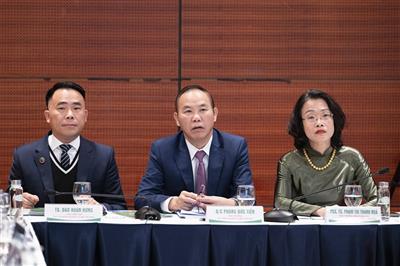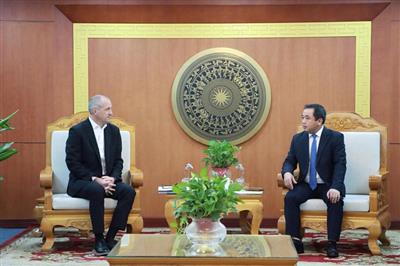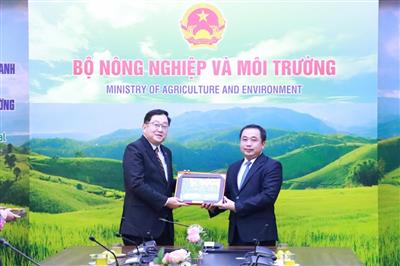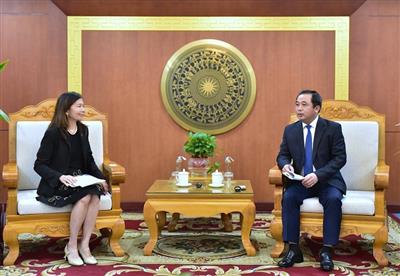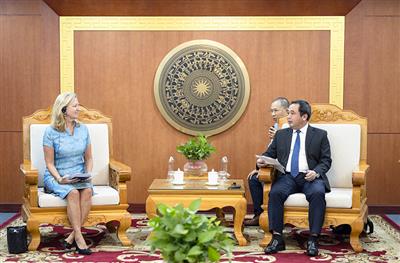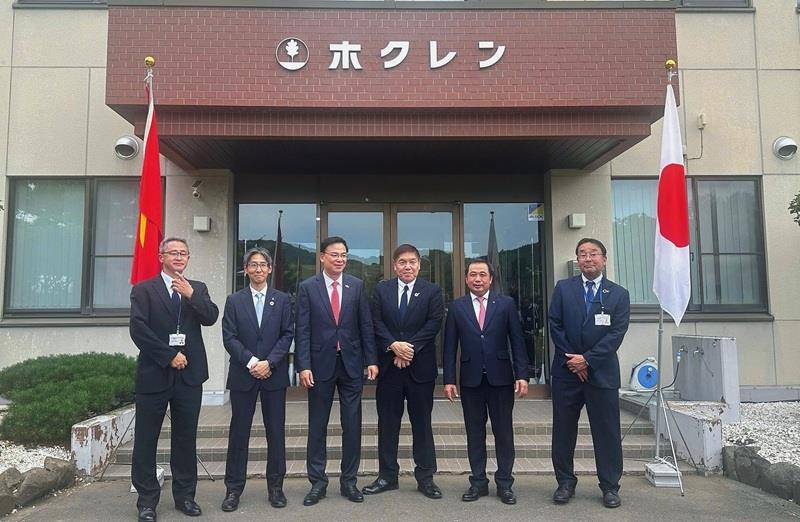
Technological breakthroughs in climate and disaster response: From ideas to action
11/05/2025TN&MTAt the thematic session on irrigation, disaster prevention, meteorology, hydrology, and climate change—part of the Conference to implement Resolution No. 57-NQ/TW organized by the Ministry of Agriculture and Environment on May 10 in Bac Ninh—experts and policymakers presented key recommendations focused on the application of science, big data, and artificial intelligence. These orientations reflect a strong commitment to innovation in managing natural resources and disaster risks, while offering concrete prospects for advancing climate adaptation in the near future.
Urgent need for technological breakthroughs in early warning of extreme weather events
Mr. Nguyen Truong Son, Deputy Director General, Department of Dike Management & Natural Disaster Prevention & Control
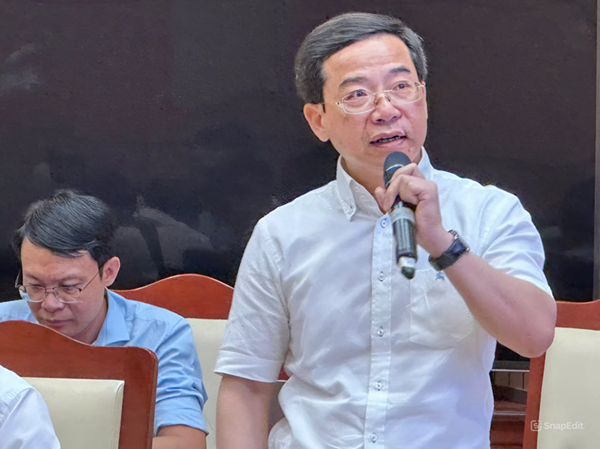
Natural disasters in Vietnam are becoming increasingly abnormal, extreme, and difficult to predict. Not only have their intensity and frequency increased, but multiple types of disasters now occur simultaneously or in rapid succession, creating severe challenges for response and mitigation.
Given this reality, advancing science and technology—particularly digital technologies and artificial intelligence—is an urgent requirement for improving early warning,
forecasting, and risk management. However, the current data and technological infrastructure remains fragmented and poorly integrated, with analytical tools still largely manual and reliant on human expertise.
We must prioritize the development of integrated early warning technology platforms, using big data and machine learning to detect disaster risks such as flash floods, landslides, droughts, and sea level rise. At the same time, it is crucial to establish intelligent operations centers and real-time digital risk maps to enhance proactive response capabilities at all levels.
In parallel, we propose the creation of a large, interdisciplinary disaster database and stronger coordination between meteorology, hydrology, irrigation, and disaster prevention agencies. Only with an interconnected, synchronized system and effective data sharing can early warning and risk management truly be effective and timely.
National meteorological sector advances toward a digital ecosystem to support early warning and sustainable development
Mr. Mai Van Khiem, Director General, National Center for Hydro-meteorological Forecasting, Vietnam Meteorological & Hydrological Administration
To effectively implement Resolution No. 57, the meteorological and hydrological sector has identified four strategic pillars. The first is the modernization of monitoring, surveillance, and simulation infrastructure—especially upgrading radar, satellite, and ground station networks to strengthen early warning capabilities.
Second, we are building a digital ecosystem for the meteorological and hydrological sector, integrating big data, artificial intelligence, and modern technologies to analyze, forecast, and

deliver high-quality climate services in support of socio-economic development.
Third, we focus on strengthening forecasting capacities for extreme climate and risk scenarios based on updated climate change projections. Seasonal forecasting models and integrated climate–hydrology–marine models are essential in an era of increasingly unpredictable hazards.
Lastly, we are improving the quality and customization of hydrometeorological services, tailoring information to the specific needs of sectors such as agriculture, energy, urban planning, and public health. This ensures that hydrometeorological data meaningfully contributes to sustainable development and national resilience.
Water resources sector builds a comprehensive digital foundation connecting central and local levels
Dr. Luong Van Anh, Deputy Director General, Department of Water Resources Infrastructure Management
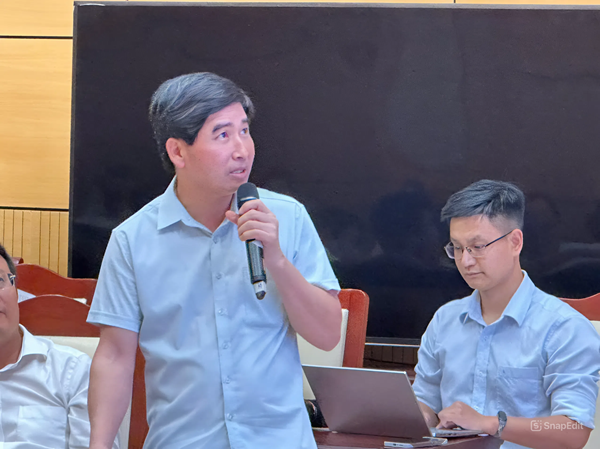
In the water resources sector, we view digital transformation as a core driver for improving governance efficiency, management, and public service delivery. To realize this vision, we have developed a comprehensive digital transformation model based on four integrated layers.
The first is the digital data infrastructure, where we are building standardized, real-time databases on meteorology, hydrology, water sources, and water infrastructure—fully
interoperable with national data systems. The second layer involves the application of advanced technologies, including intelligent monitoring, artificial intelligence, simulation models, and digital mapping for irrigation infrastructure.
The third layer focuses on services and governance, with centralized command systems connecting central and local levels, a digital portal for water-related services, and a data-driven decision support system. The fourth layer concerns cybersecurity and digital infrastructure, ensuring system safety and operational stability.
Under the direction of the Ministry of Agriculture and Environment, we are gradually establishing a comprehensive digital ecosystem for the water resources sector. This includes eight specialized modules covering planning, irrigation operations, water security, rural water supply, and investment management. We are also implementing an integrated information management system for the Ma River Basin, supported by KOICA, which includes modules for water demand forecasting, dam safety management, and saline intrusion mitigation.
Of course, this process faces many challenges, such as a shortage of high-quality digital personnel, limited data interoperability, and constrained investment resources. Therefore, we propose a set of solutions including institutional reform, specialized database development, capacity building, and expanded public–private partnerships to mobilize resources for the digital transformation of the water sector.
Promoting technology transfer, human resource development, and AI in climate change research
Dr. Nguyen Tuan Quang, Deputy Director General, Department of Climate Change

In this new stage, we have identified key orientations for scientific research and technological innovation to strengthen climate change response. First, we must review and improve institutional and policy frameworks to facilitate technology transfer and foster innovation in climate adaptation and greenhouse gas (GHG) mitigation. Equally important is the development and strategic utilization of high-quality human resources to meet the rising demands of climate-related science and technology.
Technically, we are prioritizing the research and transfer of advanced tools and models for GHG emission forecasting, simulation, and risk assessment. This includes developing emission quantification methods and transparent, reliable certification systems for emission reductions.
We also emphasize the development of zero-emission renewable energy technologies, energy storage, carbon capture, utilization and storage (CCUS), and low-impact cooling technologies that use natural refrigerants.
We are also exploring methodologies to generate carbon credits from sectoral mitigation measures in alignment with Vietnam’s Nationally Determined Contributions (NDCs), as well as indicators for assessing carbon leakage in export sectors—laying the groundwork for future carbon pricing mechanisms.
Furthermore, we aim to develop smart, integrated technologies to monitor and forecast the overall impacts of climate change and sea level rise. This includes early warning systems for land subsidence, coastal erosion, saltwater intrusion, agricultural productivity, disease outbreaks, and environmental conditions. Special focus is placed on ecological, organic, circular, and low-emission agriculture, along with climate-resilient crop and livestock breeding. We also support technologies for methane reduction, carbon sequestration in forestry, and improved emission/absorption coefficients in plantation forest management.
Lastly, digital transformation in climate governance is a strategic priority. We are advancing big data systems, GIS platforms, and AI applications for climate risk analysis, disaster forecasting, and decision-making to strengthen our national resilience to climate change.
Ngoc Huyen


